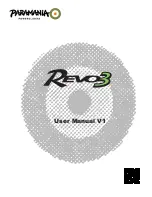
5 AIRCRAFT OPERATION INSTRUCTIONS
EMERGENCY PROCEDURES
5.1 GENERAL
This section outlines recommended procedures for emergency situations that could occur in
flight. Before each flight, be aware of the possibility of an emergency situation, and mentally
prepare a plan to resolve the situation. If possible practice the emergency procedures during
training.
5.2 STALL CHARACTERISTICS
At low speed, close to stall speed (about 65 km/h – 35 kt) in straight flight, the aircraft will
begin gently shaking just prior to the separation of airflow. At this moment, a forward
movement of the stick will return the aircraft to normal flight. Also all controls are fully in force
and effective during the speed reduction. At further speed decrease the aircraft comes to a
stall – the nose goes down below the horizon and left or right wingtip drops. The stall
recovery is to be carried out as follows:
•
briskly move the stick forward, maintain the straight direction with rudder pedals
•
after flying speed is regained, smoothly raise the nose to maintain horizontal flight at the
desired airspeed
WARNING
: when recovering from a stall, never use ailerons. The steep flight must be
recovered smoothly only after proper speed is reached. A violent steep flight recovery at
insufficient speed can lead to a secondary stall that ends in a spin.
Never fly or try flying at the stall speed intentionally.
5.3 SPIRAL DIVE RECOVERY
Revocery from a spiral dive is as follows:
•
apply opposite rudder (against the direction of rotation)
•
apply opposite aileron (against the direction of rotation)
•
apply up elevator, ensuring that the maximum pull-out load factor is not exceeded
WARNING:
During powered flight the engine must be throttled to idle. This prevents
overspeeding of the engine during spin recovery.
5.4 SPIN RECOVERY
WARNING
: The spin is a dangerous flight regime and therefore it is not allowed in this
aircraft. Spings have not been flight tested. The response of the aircraft due to incorrect
piloting cannot be anticipated. Always fly in such a way in order to prevent spins.
TST-14 M – Aircraft Manual
rev.0 issued 2006-11-29 – page 28 of 40






































